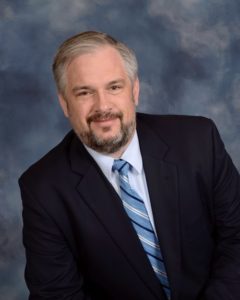
Ten Baptists Everyone Should Know: James Petigru Boyce
James Petigru Boyce was born on January 11, 1827 in Charleston, South Carolina. His father, Ker Boyce, was a banker and businessman. He was one of the most wealthy men in South Carolina. Boyce’s father wanted him to become a lawyer and was disappointed when he entered the ministry. When one of his father’s business associates heard that young Boyce had become a preacher, he asked, “Well, well, why don’t he follow some useful occupation? Ironically, however, Boyce’s background in business proved to be useful in the great accomplishment of his life—the founding of the first Baptist theological seminary in the South.
Boyce was a “gentleman theologian” who not only taught his students Bible doctrines, but also matters of social etiquette. Principally, however, Boyce was a theologian. His mother was converted under the preaching of Basil Manly, Sr., the pastor of the First Baptist Church of Charleston, South Carolina. This man, who would later be the chairman of the first board of trustees of Southern Seminary (and father of a founding faculty member), had a profound influence upon the young Boyce.
Conversion and Training
James Boyce began his formal education at the local College of Charleston, but after two years he moved to Providence, Rhode Island where he attended the first Baptist college in America, Brown University. While at Brown, Boyce was heavily influenced by another great Baptist leader, Francis Wayland. Much of Boyce’s teaching style was modeled upon the methods that he had observed from Wayland. Wayland’s impact upon Boyce was far more important than the impartation of a teaching method; Wayland was also instrumental in Boyce’s conversion. While at Brown, Boyce had come under deep conviction of sin and had been challenged by a prayer and message from President Wayland in one of the school’s chapel services. When Boyce returned to Charleston for spring break in 1846, he remained under deep conviction. He was subsequently converted and baptized during that break in a protracted meeting conducted by Richard Fuller. When Boyce returned to Brown after the spring break, he was a new creature in Christ.
After leaving Brown, Boyce attended Princeton Theological Seminary from 1849 to 1851. It was there that he received his formal theological training. At Princeton, Boyce studied under the likes of Archibald Alexander, his son Addison Alexander, and the great systematic theologian Charles Hodge. Hodge would profoundly influence Boyce as his three volume Systematic Theology was the model for Boyce’s later Abstract of Systematic Theology, which would be the core theology textbook at Southern Seminary for many years. During the years in Princeton, Boyce was exposed to the classic writings of Reformed theology, like the Institutio theologiae elencticae by Francis Turretin, as well as Lectures on Theology by John Dick.
Upon completion of his studies at Princeton, Boyce served as pastor of the First Baptist Church of Columbia, South Carolina for two years. In 1855 Boyce began to teach theology at Furman University. The very next year, in July, the twenty-nine year old Boyce delivered a remarkable lecture entitled, “Three Changes in Theological Institutions.” This lecture was seen as “a virtual manifesto for a common theological seminary for Baptist in the South.” Among the three changes that Boyce proposed, the first was openness. By this Boyce meant that a seminary should be open to anyone who had been called by God regardless of their academic background or social position. The second change which Boyce proposed was excellence. By this Boyce meant that a program of theological study should be established whose academic standards would be on par with the quality offered by Princeton, Andover, Harvard and Yale. The third change which Boyce proposed was confessional identity. By this Boyce meant that the seminary should be established on doctrinal parameters which would provide continuity and guidance for the future. This was important, Boyce believed, to protect the seminary from doctrinal erosion.
Southern Seminary Formed
When the first Southern Baptist seminary was formed, Boyce insisted that each professor agree to a statement of faith called the “Abstract of Principles.” This statement was drawn up by Basil Manly, Jr. and was incorporated into the Fundamental Laws of Southern Seminary. The Abstract of Principles was based on the Philadelphia Confession of Faith which was itself based on the Second London Confession which was the Baptist version of the Westminster Confession. Each professor of Southern Seminary, since its founding in 1859, has ben required to sign the Abstract, pledging to teach “in accordance with and not contrary to” its doctrines.
Soon after the seminary’s founding in 1859, the dream was temporarily put on hold during the American Civil War. After the seminary disbanded in 1862, Boyce and his friend and fellow founder John Broadus served as chaplains among the Confederate troops. Also during this time, Boyce served in the South Carolina state legislature. He was urged strongly to continue in the political arena after the war, but thankfully his friend John Broadus convinced him otherwise.
After the war, the four original founders of the seminary—Boyce, Broadus, Manly and William Williams—gathered at Boyce’s home in Greenville, South Carolina. After a time of prayer Broadus suggested, “Suppose we quietly agree that the seminary may die, but we will die first.” The seminary would survive, due largely to the efforts of James Petigru Boyce. Over and over he gave out of his own resources to help needy students or pay the salaries of professors. His love for the seminary is evident by the account from one of the meetings of the Southern Baptist Convention where Boyce actually wept openly and earnestly on behalf of funds for the seminary. He said, “I would not beg for myself, or for my family like this, but for our beloved Seminary I am willing to beg.” Boyce’s love for the seminary (and theological education in general) is also seen in that he refused several offers of presidency of railroads, banks, and great universities.
In the summer of 1888, Boyce made his first and final trip overseas. He would not return home alive. He died in southern France in December of that year two weeks before his sixty-second birthday. His body was returned to Louisville where he was buried at Cave Hill Cemetery. A monument was erected in short order which still stands and unarguably reads: “James P. Boyce, to whom, under God, the Seminary owes its existence.”
Although Boyce’s systematic theology had a long-lasting impact on Baptists (it was used as a textbook for the seminary well into the second decade of the twentieth century), it is the Southern Baptist Theological Seminary itself, along with the five other Southern Baptist seminaries that followed, that is his most lasting legacy.
Boyce Resources
If you want to learn more about Boyce, John A. Broadus’ Memoir of James Petigru Boyce is available online at Google Books. The most comprehensive study of Boyce’s life and thought is Thomas J. Nettles’ James Petigru Boyce in P&R’s American Reformed Biographies series. To learn about the seminary that Boyce founded, Gregory A. Wills’ Southern Baptist Theological Seminary, 1859–2009. To read Boyce yourself, you can check out Boyce’s systematic theology online at The Reformed Reader website.
*This is part eight of ten of the “Ten Baptists” series by Steve Weaver. See part one on William Kiffin, part two on Benjamin Keach, part three on William Carey, part four on John Gill, part five on Andrew Fuller, part six on Adoniram Judson, and part seven on John Leadley Dagg.

